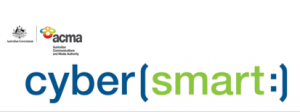This is number 8 in a series of great articles designed to put in school newsletters to keep parents informed around the latest cybersafety issues. They have been developed by  the Cybersmart team at ACMA and are available via http://www.cybersmart.gov.au/Outreach/Connected.aspx
the Cybersmart team at ACMA and are available via http://www.cybersmart.gov.au/Outreach/Connected.aspx
Schools are encouraged to copy and paste these in your school newsletter or share them online. Find the series tagged under Cybersmart
8- Managing sexting
Sexting is the sending of provocative or sexual photos, images, messages or videos using a mobile phone, via email or posting online. Young people often consider sexting as a way of connecting in a relationship.
Support your child’s safe online experience by considering the following.
- Think about the legal ramifications. If anyone in the photo is under 18 they may be committing a crime. Viewing it or sending it to others may also be a crime.
- Report it. If the image/video is online, you may then contact the webmaster and ask them to remove it.
- Seek help. Ask the school to help track who might have the image and where it might be posted. Ask them to provide support to your child and others involved as the negative impacts of sexting can affect grades and behaviour.
- Be reasonable about consequences. Sexting is not uncommon behaviour and your child is not alone in being negatively impacted. Rather than adding to the distress, implement clear consequences for your child instead. For example, by limiting phone and internet use.
- Friends are critical. Help them stay connected to friends online and offline for support. Other trusted adults can also check your child’s wellbeing and help them manage peer reactions.
If your child is distressed about something that’s happened to them online, seek professional help through the Cybersmart Online Helpline (www.cybersmart.gov.au/report.aspx) or call Kids Helpline on 1800 55 1800.
DEECD resources can be found http://www.education.vic.gov.au/about/programs/bullystoppers/Pages/parents.aspx
Glossary:
Webmaster
The Webmaster is a person who designs, develops or operates a website.
A full cybersafety glossary may be found at www.cybersmart.gov.au/glossary.aspx
